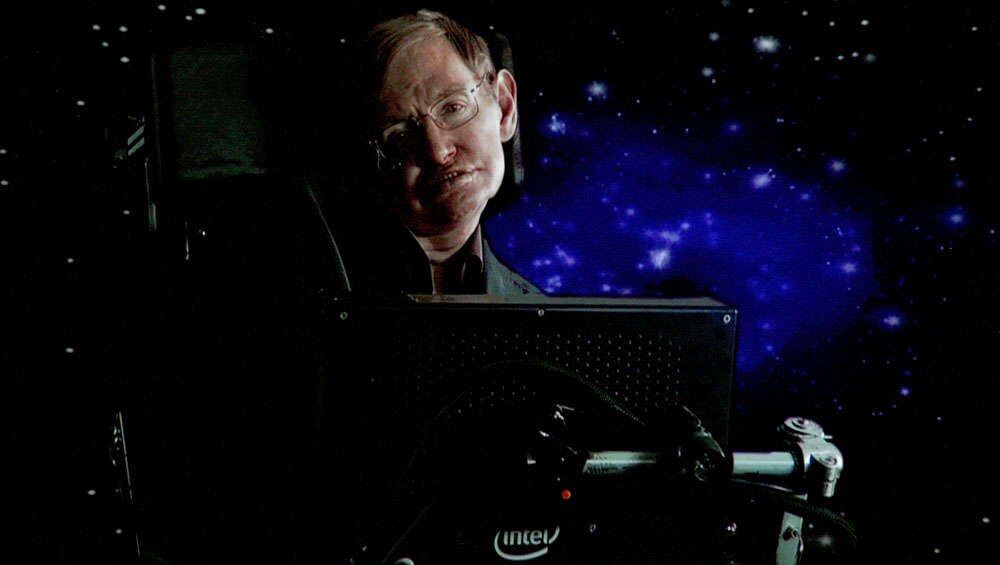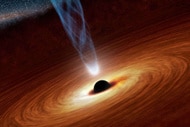Create a free profile to get unlimited access to exclusive videos, sweepstakes, and more!
Black hole conjured up in a lab does the same weird things Stephen Hawking thought it would do

When something rips physics apart, you cross over into the quantum realm, a place inhabited by black holes, wormholes and other things that have been the stars of multiple sci-fi movies. What lives in the quantum realm either hasn’t been proven to exist (yet) or behaves strangely if it does exist.
Black holes often venture into that realm. With these collapsed stars — at least most of them are — being impossible to fly a spacecraft into (unless you never want to see it again), one physicist decided that the best way to get up close to them was under a literal microscope. Jeff Steinhauer wanted to know whether black holes radiate particles like the late Stephen Hawking theorized they would. Because one of these leviathans would never fit in a lab, he and his research team created one right here on Earth.
“We have to understand how we see the Hawking radiation sound waves falling in and coming out,” Steinhauer, who co-authored a study recently published in Nature Physics, told SYFY WIRE. “They should be very slight. Seeing this radiation from a real black hole is too weak and would be totally overpowered by other sources of radiation, which is why we want to see it in an analog system.”
This black hole analog was more of a tube as opposed to the spectacular swirling things you might see in NASA images like the one above. Anyway, the light show around such a monster black holes is really just all the dust and gas and other star stuff it devours. Steinhauer’s team had no need for an entire accretion disc. They just wanted to see if one of the quantum entangled particles that went to the brink of the event horizon would escape as Hawking predicted. Quantum entanglement means that two particles will behave in exactly the same way, wherever they are in time and space.
When one of a pair of entangled particles goes too far and passes the event horizon, but the other manages to stay just on the edge of the point of no return, it eventually will get radiated back out into space. This is Hawking radiation. In an analog black hole made of rubidium gas, researchers substituted sound waves for the light waves black holes eat in space because rubidium atoms zoom faster than the speed of sound, so no sound wave that reaches the event horizon can ever escape. However, the other entangled sound wave would be outside the event horizon, where the gas flow was much slower and it was able to move around.
“We had to look for something correlated inside and outside the black hole,” Steinhauer said. “Every time there’s a bit of wave inside the black hole, there’s wave outside of black hole, and that had to be repeated thousands of time. You have to keep looking for a wave inside and a simultaneous wave coming out.”
Because the camera that photographed the analog black hole would instantly destroy it, the analog had to be recreated over and over. Each of these was about 0.1 milimeters long and made of about 8,000 atoms. Just to give an idea of exactly how mind-blowingly small this is, the period at the end of this sentence has at least a billion atoms. Every time a new analog was created, the team needed to find pairs of sound waves that had one wave moving toward the even horizon and the other already past it. Rubidium gas flows faster than the speed of sound, so that prevented one of these sound waves from breaking out, just like the crushing gravity of a black hole in space means imminent doom.
What taking photos on repeat proved was that Hawking radiation remains constant. The team needed so much data to find enough correlations between how all these pairs of sound waves behaved. Turned out they did the same thing every time, so Hawking was right. At least this experiment proved him right. Until we can find some way to study black holes in space with a telescope more technologically advanced than we can ever imagine, theoretical studies like Hawking’s will have to support whether this is likely to happen in actual black holes. Steinhauer wants to go further, as in quantum gravity.
“I would like to go beyond Hawking’s calculation, to take quantum gravity into account,” he said. “According to general relativity, you can figure out regular gravity if you know how massive a body is. Quantum gravity has randomness like any quantum mechanical system. I also want to see how Hawking radiation is analogous to things such as air molecules scattering sound.”
The weirdness of black holes, and what they could mean for spacetime, never really ends.



























